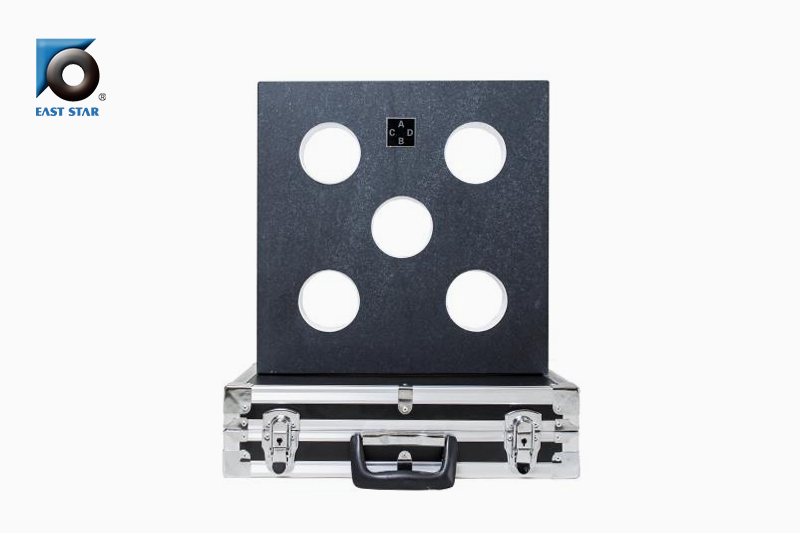Tel: +86-531-88917773 E-Mail: eaststar@public.jn.sd.cn
- All
- Product Name
- Product Keyword
- Product Model
- Product Summary
- Product Description
- Multi Field Search
Views: 0 Author: Site Editor Publish Time: 2025-05-21 Origin: Site








In the realm of precision engineering and manufacturing, accurate measurement is paramount. Whether it's ensuring the dimensions of a machined part or calibrating equipment, the tools used for measurement play a critical role. Among these, Standard Granite Measuring Instruments stand out for their stability and accuracy. This article delves into the essential measurement instruments, emphasizing the significance of Standard Granite Measuring Instruments, and provides insights into their applications, benefits, and comparisons.
Accurate measurement ensures that components fit together correctly, function as intended, and meet quality standards. Inaccuracies can lead to product failures, increased costs, and safety hazards. Therefore, selecting the right measurement tools is crucial for any workshop or manufacturing facility.

Several measurement instruments are fundamental in workshops and manufacturing settings:
Calipers are versatile tools used to measure the distance between two opposite sides of an object. They come in various types:
Vernier Calipers: Provide precise measurements and are widely used in mechanical engineering.
Dial Calipers: Feature a dial gauge for easy reading.
Digital Calipers: Offer digital readouts for quick and accurate measurements.
Micrometers measure small distances with high precision. Types include:
Outside Micrometers: Measure the external dimensions of objects.
Inside Micrometers: Measure the internal dimensions, such as the diameter of holes.
Depth Micrometers: Measure the depth of holes or recesses.
Height gauges measure the height of objects and mark items for machining. They are essential for ensuring components meet specified dimensions.
Dial indicators measure small distances or angles and are used to check the variation in tolerance during the inspection process.
Gage blocks, or slip gauges, are precision-ground and lapped measuring standards used to calibrate measuring equipment and for high-accuracy measurements.
Standard Granite Measuring Instruments are precision tools made from granite, known for their stability and resistance to wear. They provide a stable reference plane for measurements and are less affected by temperature changes compared to metal surfaces.
Stability: Granite's natural properties ensure minimal expansion or contraction with temperature changes.
Durability: Resistant to wear and corrosion, ensuring long-term accuracy.
Non-Magnetic: Ideal for use in environments where magnetic interference is a concern.
Granite Surface Plates: Provide a flat reference surface for inspection and layout.
Granite Squares: Used to check the squareness of components.
Granite Straight Edges: Assist in checking the straightness of surfaces.
Granite Angle Plates: Support workpieces during inspection or machining.
Understanding the differences between various measurement tools helps in selecting the right instrument for specific applications.
| Instrument | Material | Accuracy Level | Primary Use |
|---|---|---|---|
| Vernier Calipers | Steel | 0.02 mm | Measuring internal and external dimensions |
| Micrometers | Steel | 0.01 mm | Measuring small dimensions with high precision |
| Height Gauges | Steel | 0.02 mm | Measuring heights and marking workpieces |
| Dial Indicators | Steel | 0.01 mm | Measuring small distances or angles |
| Gage Blocks | Steel | 0.001 mm | Calibration and high-precision measurements |
| Granite Surface Plates | Granite | 0.005 mm | Providing a reference surface for measurements |
Standard Granite Measuring Instruments are widely used in various industries:
Manufacturing: For inspection and layout of components.
Aerospace: Ensuring precision in aircraft component manufacturing.
Automotive: Checking the flatness and alignment of engine parts.
Research Laboratories: Providing a stable base for experiments requiring precise measurements.
To ensure the longevity and accuracy of Standard Granite Measuring Instruments, proper maintenance is essential:
Regular Cleaning: Remove dust and debris using a soft cloth.
Avoiding Heavy Impacts: Prevent chipping or cracking by handling with care.
Periodic Calibration: Ensure the surface remains flat and accurate.
Granite's natural properties, including its hardness, stability, and resistance to wear and temperature changes, make it ideal for precision measuring instruments.
It's recommended to calibrate granite surface plates annually or more frequently if used extensively.
Minor surface damages can sometimes be re-lapped to restore flatness. However, significant cracks or chips may require replacement.
Yes, granite surface plates come in various grades, such as AA, A, and B, indicating their accuracy levels.
Accurate measurement is the backbone of quality manufacturing and engineering. Standard Granite Measuring Instruments offer unparalleled stability and precision, making them indispensable in various industries. By understanding the functions and applications of these tools, professionals can ensure the highest standards in their work.
Copyright © 2023 Jinan EAST STAR Precision Measure Co., Ltd. All rights reserved. | Sitemap | Privacy Policy | Support By Leadong